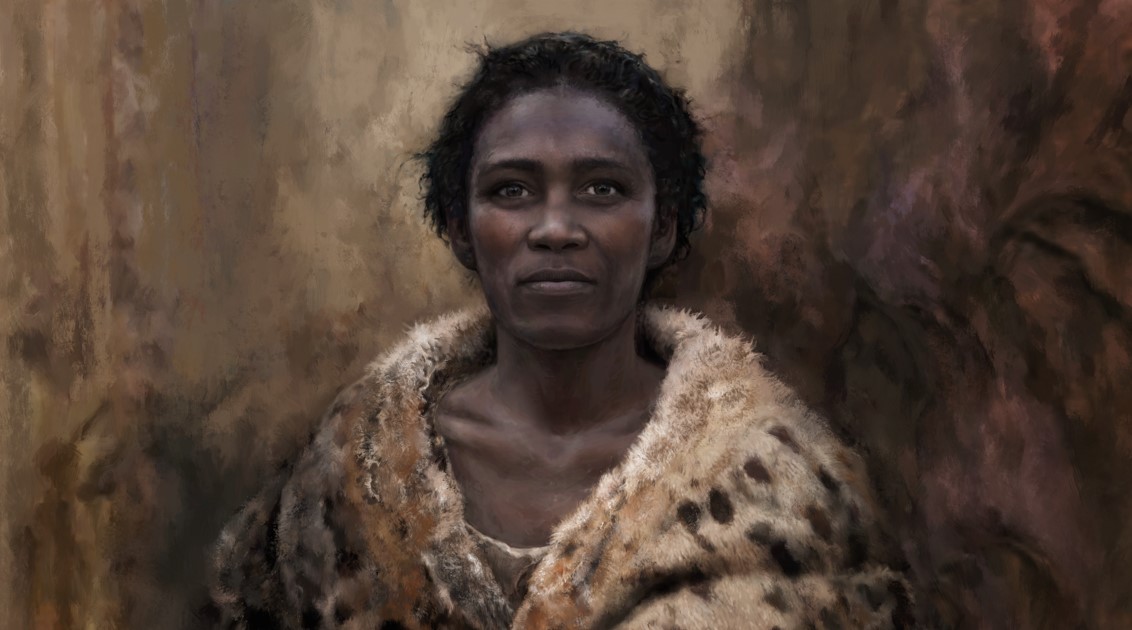Scientists have successfully sequenced the genomes of seven people who lived in Europe between 42,000 and 49,000 years ago, revealing that they belonged to the earliest known group of humans to split from the original “Out-of-Africa” lineage. The ancient individuals were also part of the very first population to mix with Neanderthals, picking up sections of DNA from these extinct hominids that can still be found in all non-African populations today.
While the story of how our prehistoric ancestors left Africa and colonized the world is still somewhat patchy, we do know that Homo sapiens arrived in Europe over 45,000 years ago, at a time when Neanderthals inhabited Eurasia. Previous research has identified two distinct populations of early modern humans outside of Africa, one of which is represented by bones from Zlatý kůň from Czechia, while the other hails from Bacho Kiro in Bulgaria.
Intriguingly, genetic analyses of a Zlatý kůň female have revealed traces of a single admixture event with Neanderthals, while genomes from Bacho Kiro display additional Neanderthal DNA that are indicative of subsequent interbreeding. Researchers therefore suspect that the Zlatý kůň woman may have lived shortly after humans left Africa and first encountered Neanderthals, although failed attempts at radiocarbon dating have thwarted all attempts to confirm her age.
By complete chance, however, the authors of a new study have discovered a group of this ancient woman’s kin at a separate site called Ranis, which lies some 230 kilometers (143 miles) away in Germany. After analyzing the genomes of six individuals at Ranis, the researchers found that they were in fact fifth to sixth degree relatives of the Zlatý kůň population.
“They’re sort of extended family,” study author Dr Kay Prüfer told IFLScience. “It would mean that they probably had a great-grandparent in common, or something like that.”
Dating of the Ranis skeletons and stone tools found at the site revealed that these humans all lived between 42,000 and 49,000 years ago, which means the Zlatý kůň community must also have been around at this time. The seven genomes sequenced from the two sites are therefore the oldest ever obtained from members of our species.
Moreover, like the Zlatý kůň specimen, the six Ranis inhabitants also display the genetic markers of a single admixture event with Neanderthals. According to Prüfer, this raises a number of intriguing questions.
Whoever you see that’s not of African ancestry, you can say that 45,000 to 49,000 years ago, our ancestors lived somewhere and probably had the chance to see each other.
Dr Kay Prüfer
“Now that we know that they only have one admixture, we still don’t know whether it’s the same admixture that the rest of us have,” Prüfer said. “You and I, we have two to three percent Neanderthal ancestry, but there is a question over whether this is the same admixture event that gave us our Neanderthal ancestry.”
The researchers therefore cross-referenced these ancient genomes with those of present-day humans in search of matching sequences of Neanderthal DNA. “And we actually see that, yes, in all [modern] populations we find individuals that carry the same [Neanderthal sequences] that we see in Ranis and Zlatý kůň,” says Prüfer.
Like the inhabitants of Bacho Kiro, however, all present humans bear the genetic traces of multiple additional episodes of interbreeding with Neanderthals that occurred as our ancestors continued along their journey out of Africa. The Ranis and Zlatý kůň populations, however, represent what Prüfer calls “the original admixture between humans and Neanderthals,” when we were just at the beginning of this great adventure.

The individuals who lived at Ranis and Zlatý kůň all had dark skin, eyes, and hair, resembling African populations.
Image credit: Tom Björklund
Analyzing the genetic sequences, the study authors calculated that this initial contact occurred between 45,000 and 49,000 years ago, and that the Ranis and Zlatý kůň individuals all lived within 80 generations of this inaugural inter-hominid hook-up.
“The Zlatý kůň/Ranis population represents the earliest split from the Out-of-Africa population sampled to date, and our results show that this split occurred shortly after a Neanderthal introgression event that took place only [around] 80 generations before they lived,” write the researchers.
Furthermore, because all present-day non-Africans share this same Neanderthal ancestry, these findings imply that we must all be descended from a single, coherent population that existed outside of the ancestral continent at the time of the admixture.
“This is really cool, because whoever you see that’s not of African ancestry, you can say that 45,000 to 49,000 years ago, our ancestors lived somewhere and probably had the chance to see each other,” says Prüfer.
What’s more, because this Neanderthal ancestry is also seen in all modern populations carrying Denisovan DNA, these findings confirm that admixture with this second extinct lineage must have occurred more recently than 45,000 years ago.
The study is published in the journal Nature.
Source Link: Oldest Human Genomes Sequenced, Revealing When We First Slept With Neanderthals